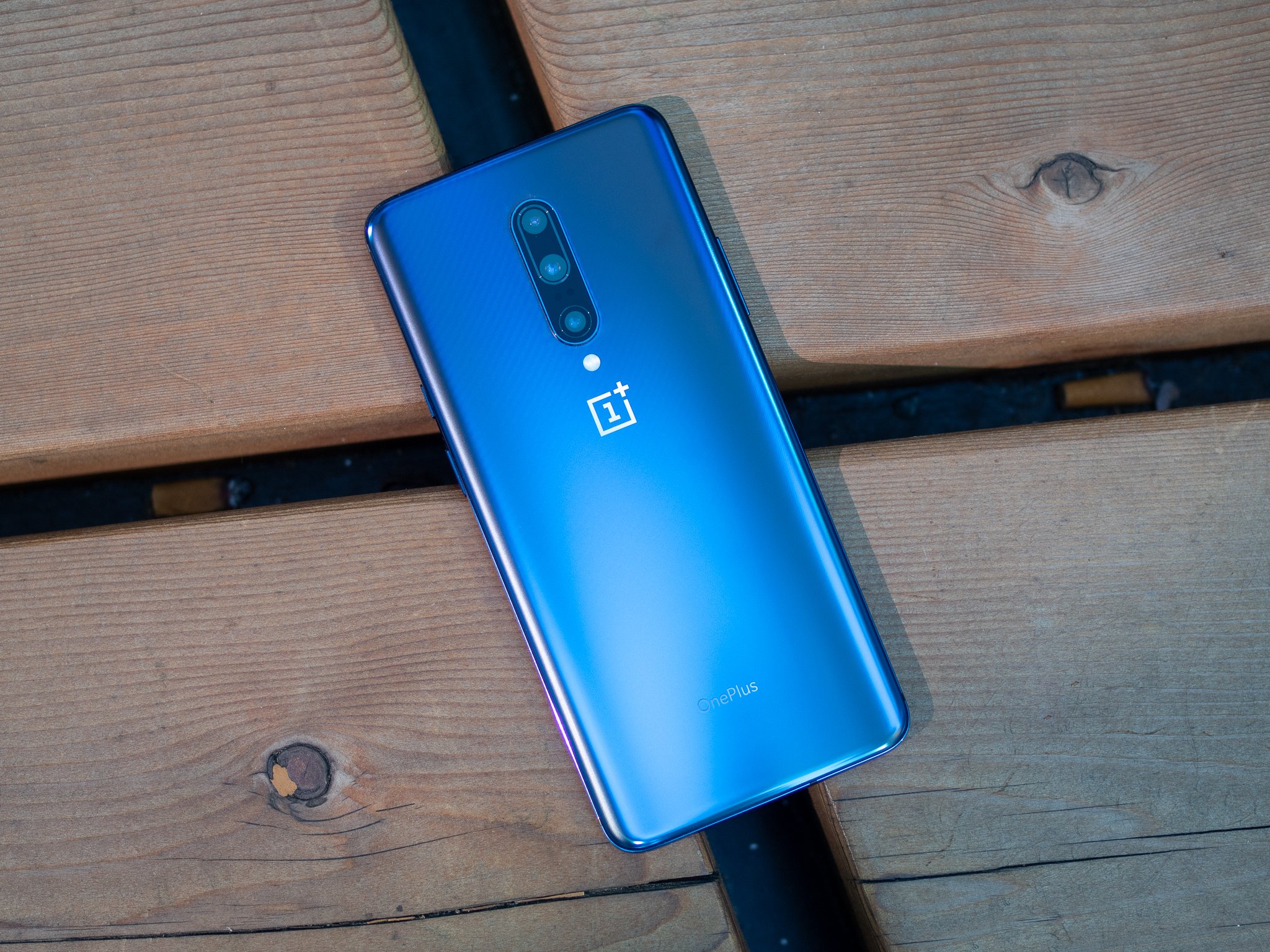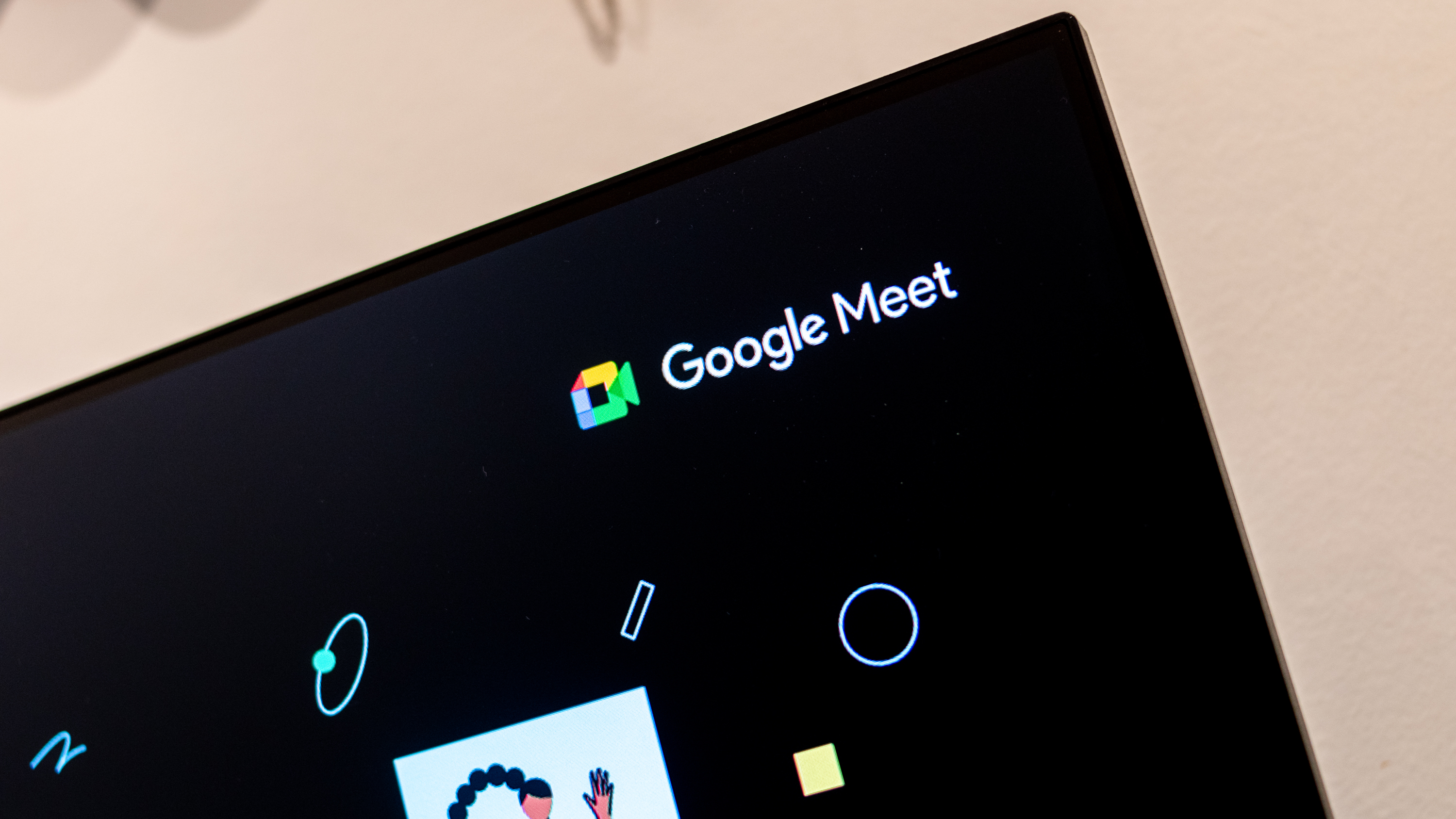The common refrain with OnePlus phones is that every compliment you extend has to be appended with "for the price." Aside from the software, which is in the conversation as the best available in the Android world, there hasn't been any area of the OnePlus experience that stood out. That is, unless you considered the massive difference in price between it and the competition. Price is extremely important, of course, but the positioning and compromises associated with OnePlus phones constrained them to a discussion about value and budgets, rather than being in the running for the moniker of the best phone at any price.
Now, the equation has changed considerably. The OnePlus 6T debuted at $549 just 6 months ago, and now we have a base-model OnePlus 7 Pro for $669 — and truth be told, the one you really want to consider as the "base" model is $699. Phone prices have steadily increased in the past three years, where top-end models now crest $1000, but there's no arguing that at this new higher price the OnePlus 7 Pro is no longer a "budget" option — this is serious money to spend on a phone, and it's meant to be judged as such. (There's also a cheaper OnePlus 7, which we've reviewed as well.)
OnePlus is clearly confident in what it can offer. The OnePlus 7 Pro may be the most expensive phone the company's ever made, but it's still built on all of the same basics that have grown its business substantially and put it in the conversation with household names like Samsung in just a handful of years. The combination is, once again, a wonderful phone.
The good
- Excellent 90Hz display
- Smooth, intuitive software
- Fast in-display fingerprint sensor
- Jam-packed spec sheet
- Well-made, attractive hardware
- Wonderful haptics
The bad
- Large and heavy
- Wide and telephoto cameras are subpar
- No water resistance rating or wireless charging
- Battery life just average for a phone this size
Massive upgrade
OnePlus 7 Pro Hardware and display
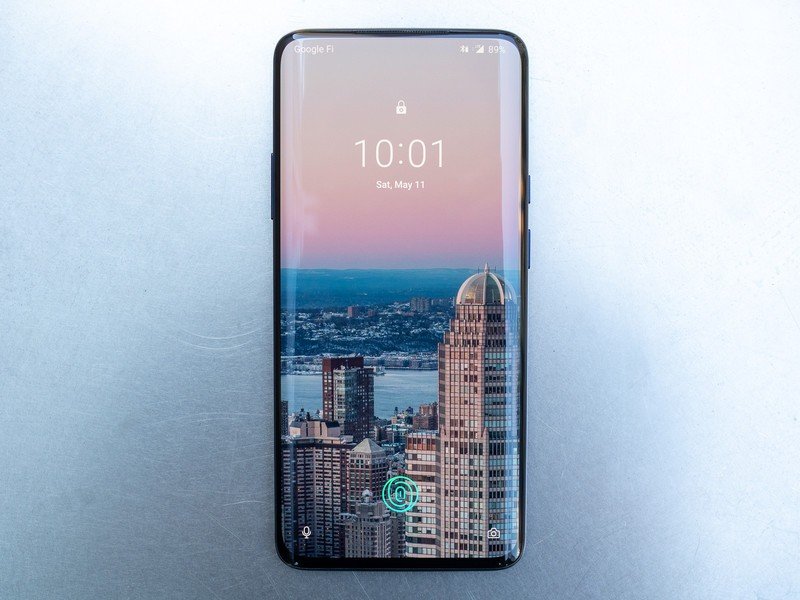
With such a considerable price jump from the OnePlus 6 and 6T, it's completely reasonable to expect a corresponding increase in hardware design and quality — and OnePlus delivered. This is the first OnePlus phone that doesn't look and feel like some sort of reference design or early prototype. There are actually well-designed and well-executed touches throughout the hardware that feel proper for a top-end phone.
This is the first OnePlus phone that doesn't look and feel like some sort of reference design or early prototype.
The front's curved glass is distinctly Samsung-like, and that feeling continues to the narrow metal frame that's complemented by a glass rear that is also curved at the edges. On the "Nebula Blue" color that back glass is adorned with a wonderful subtle matte texture, not unlike the LG V40 and G8 in certain colors — it almost feels like metal, which is very nice. Nebula Blue is actually a two-tone color that slowly transitions from light to dark as you move up the phone, both in the metal and the glass — the look definitely stands out.
The matte finish doesn't accumulate smudges in the same way a glossy one does, which means it looks much better for longer between wipe-downs. The downside is that it's incredibly slippery, and when you pair that up with the sheer size of the 7 Pro it's actually kind of tough to hold at times. It's noticeably wider and taller than the Galaxy S10+, and inexplicably over 30 grams (17%) heavier as well. The heft reassures you that the 7 Pro is made well, and feels expensive, but my goodness you're never going to forget it's in your pocket or use it without being reminded how large it is.
Nebula Blue looks amazing, but it's incredibly slick — and the size and weight of the 7 Pro isn't helping.
I used my 7 Pro in a case for most of the review period because I generally felt insecure with how well I could hold and use it in one hand as I walked down the street or made my way through the airport. Thankfully OnePlus makes fantastic first-party cases (Sandstone is great), and you'll probably want to buy one for yourself if you're at all unsure of your ability to manage a huge phone in one hand. That will be slightly less of an issue if you go with the "Mirror Gray" or "Almond" colors that have a glossy finish to give you a little extra grip, but that isn't going to overcome the size of the phone.
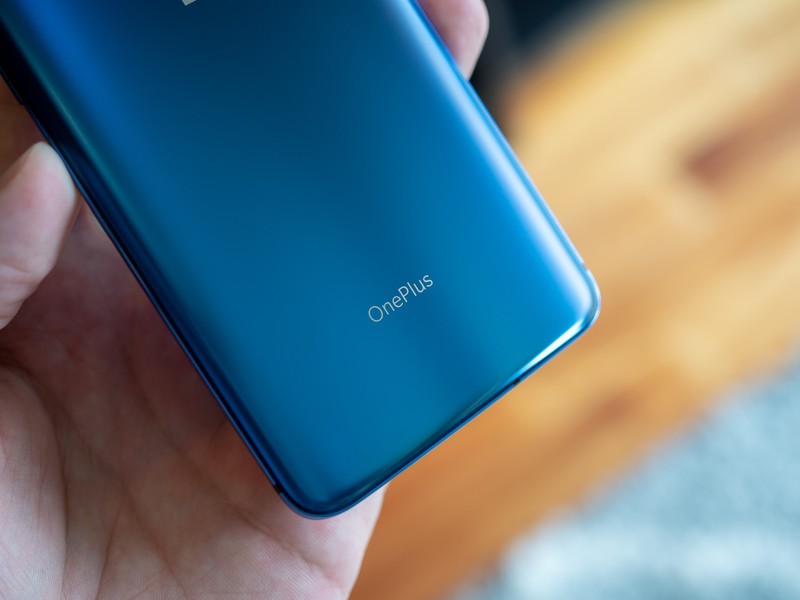
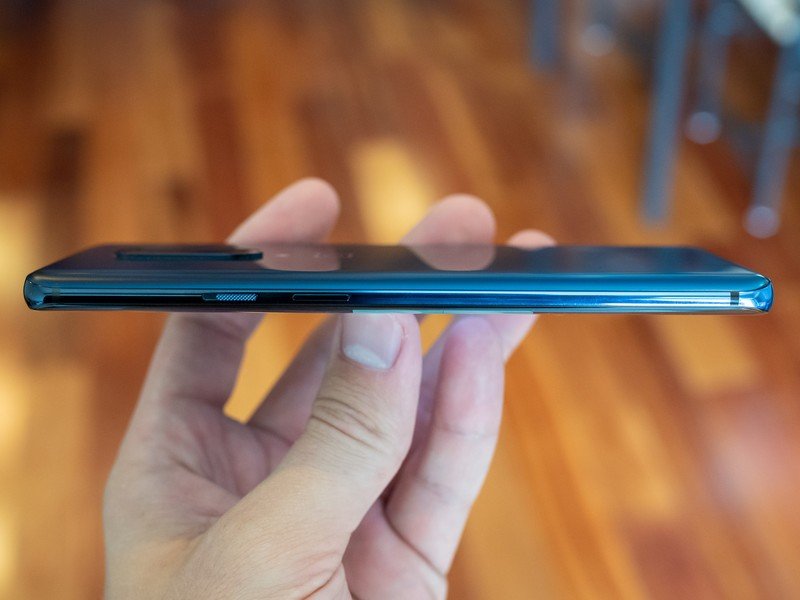
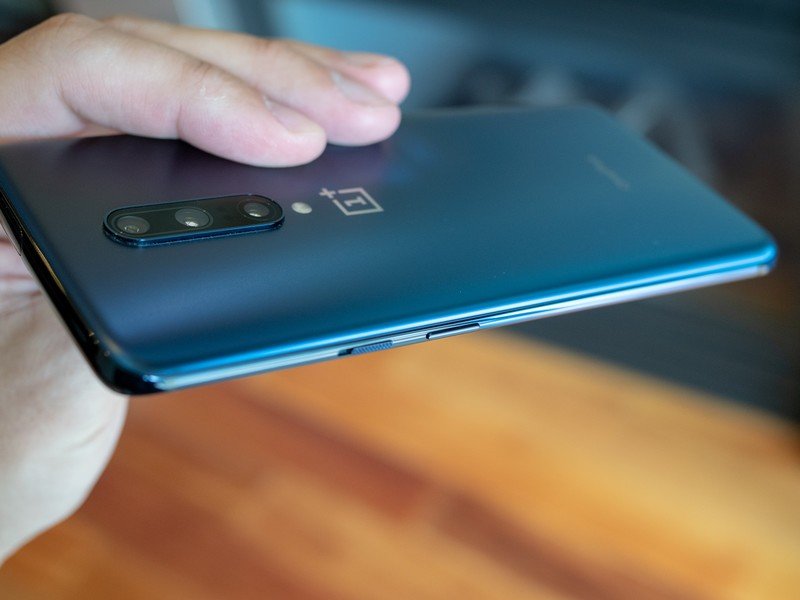
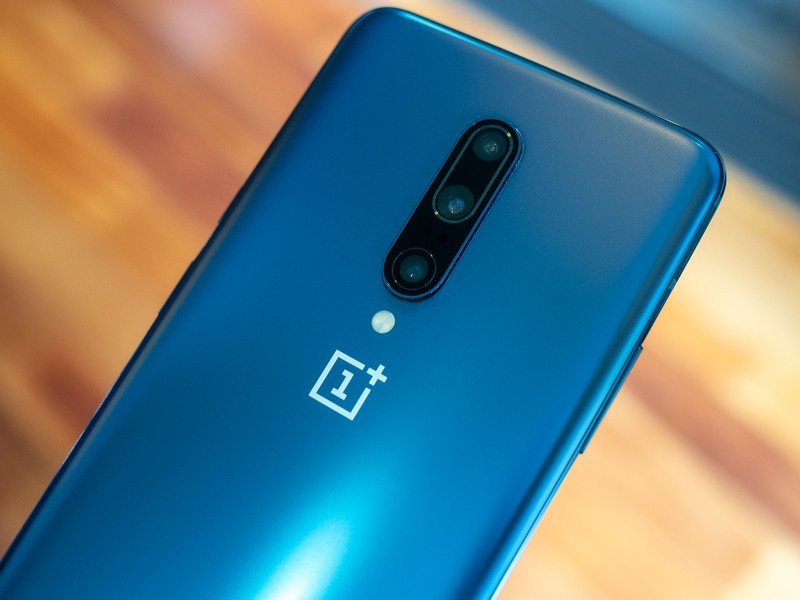
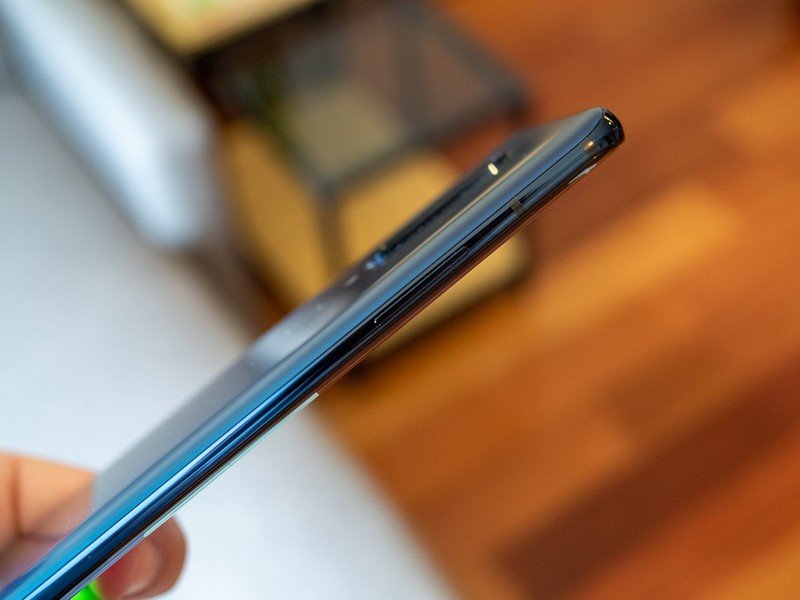
One of the most apparent ways OnePlus upped its game to match the price of the 7 Pro is in the display. It quite frankly deserves more discussion and praise than the display on every previous OnePlus phone combined. The 6.67-inch OLED is downright huge, but not far off the norm nowadays. All of the other aspects are what's important. It's QHD+ resolution, is accompanied by extremely small bezels on all sides, and is tightly curved on the left and right edges precisely like Samsung's phones. The viewing profile is Samsung-like as well: excellent colors, viewing angles and brightness. Daylight visibility isn't quite on the level of the Galaxy S10+, but it's darn close — I just don't like how long it takes to decide to go into its high-brightness outdoor mode, seemingly taking several seconds when it really should jump up immediately when sensing intense direct sunlight.
A fantastic display from top to bottom, unencumbered by big bezels or notches.
Lurking underneath that display is a new fingerprint sensor that's a huge upgrade and is actually much better than the Galaxy S10+ to boot. The sensor area is over one-third larger than the 6T's, which dramatically improves chances of recognition, but the sensor is also much faster and can handle off-angle or rotated fingerprints without issue. It's still slower than a capacitive sensor, but the 7 Pro's in-display sensor is the first I've used that isn't a burdensome experience. I can happily use it every day just like I do a capacitive sensor on my Pixel 3 XL.
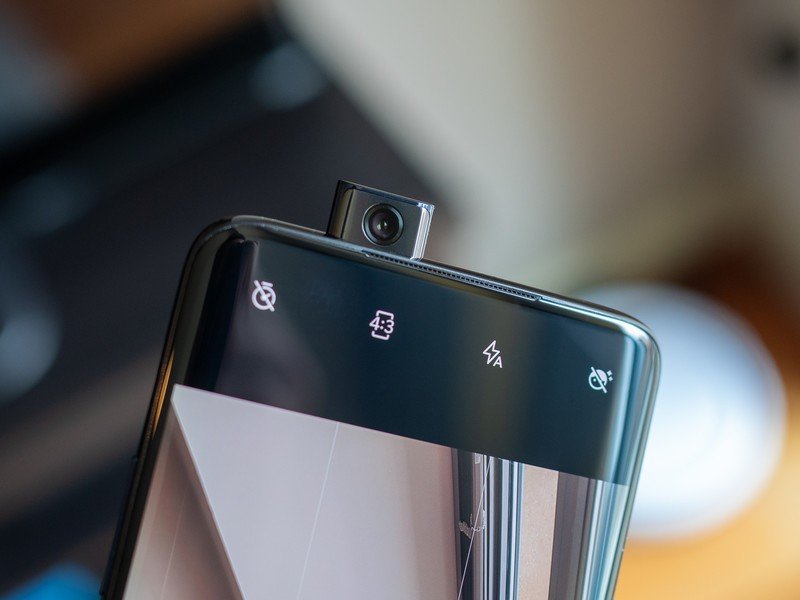
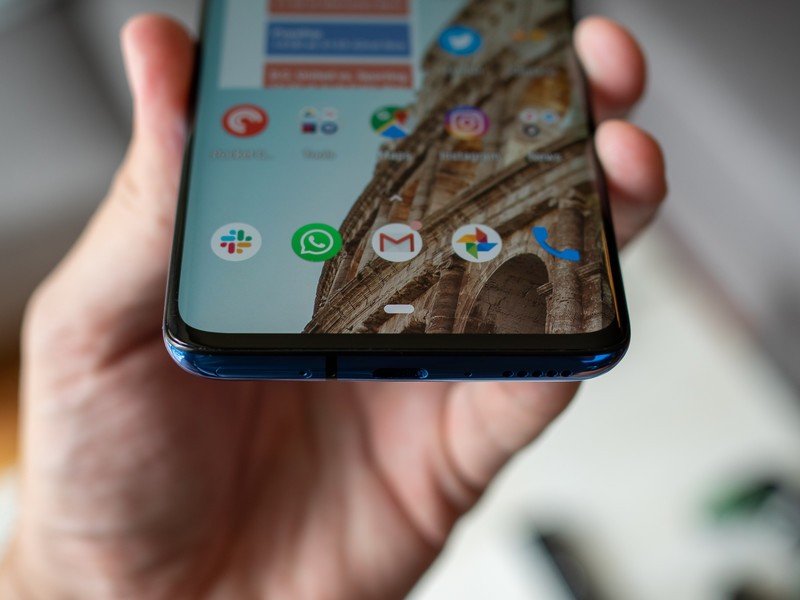
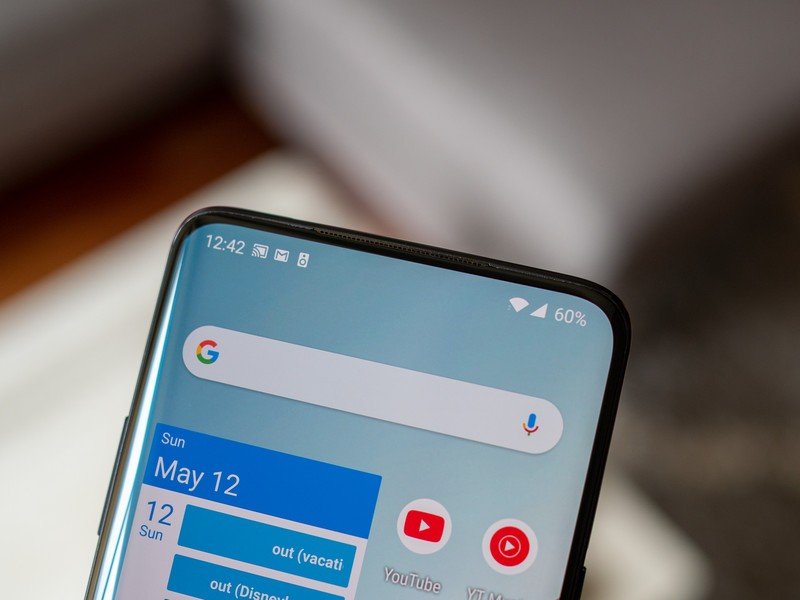
OnePlus didn't just upgrade the hardware design, it also improved the function. Despite the tiny bezel profile it managed to shoehorn a top speaker that works for both calls and stereo separation with the down-firing speaker, which is a nice treat I wasn't expecting. That bottom speaker has also switched to the right side of the USB-C port — a decision OnePlus says it made consciously because of user feedback that their hands were often blocking it on the left. The biggest example of the little attentions to detail in the OnePlus 7 Pro is the new haptic motor, which was one of my longstanding complaints with OnePlus phones. With a single generation, OnePlus just went from having the worst haptics in the industry to one of the best — it's approaching Pixel 3 levels.
So what changes hasn't OnePlus made? Well, it's the typical treatment: no water resistance rating, no SD card slot, no headphone jack, and no wireless charging. At this point I can let the SD card slot and headphone jack go (go ahead and @ me) — though I know many people can't. But I'm more upset about the water resistance and wireless charging. OnePlus is making lawyer-dodging claims that the 7 Pro is water resistant but simply doesn't have an IP rating, because that certification costs money. Well, if it doesn't have a certification then I'm not going to trust it — and I haven't treated my 7 Pro in the same way I do my water resistant phones as a result. The wireless charging point simply comes down to cost as well — and for me, a $670+ glass-backed phone really should have wireless charging.
Worthy of praise
OnePlus 7 Pro Software and battery life
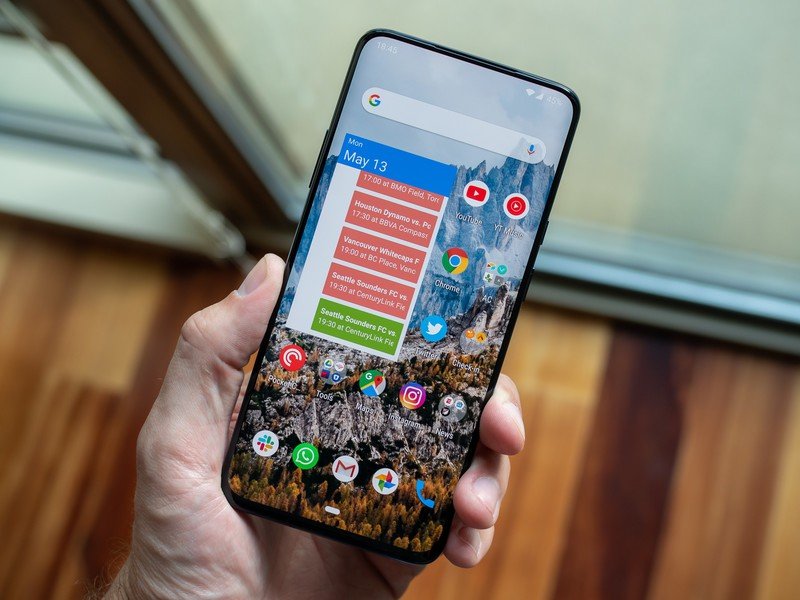
OnePlus has solidified its spot as my second-favorite take on Android, right behind Google's own. The OnePlus 7 Pro's version of OxygenOS (9.5.2.GM21AA) hasn't picked up many features or notable changes for this release that aren't already available on the last few generations, but I wasn't looking for anything new — this software is fantastic as it stands.
It's hard to find a flaw with OxygenOS — this is top-notch software through and through.
The focus on simplicity, speed and customizability run all the way through OxygenOS. The result is software that's incredibly fast, consistent, smooth and free of cruft. It's both dead-simple for anyone to pick up and use out of the box in minutes, but also extremely customizable and changeable to work exactly the way you want it to. That leads to a little bit of bloat in the settings with lots of little options to tweak and change features, but none of that gets in your way unless you want to fiddle with it.
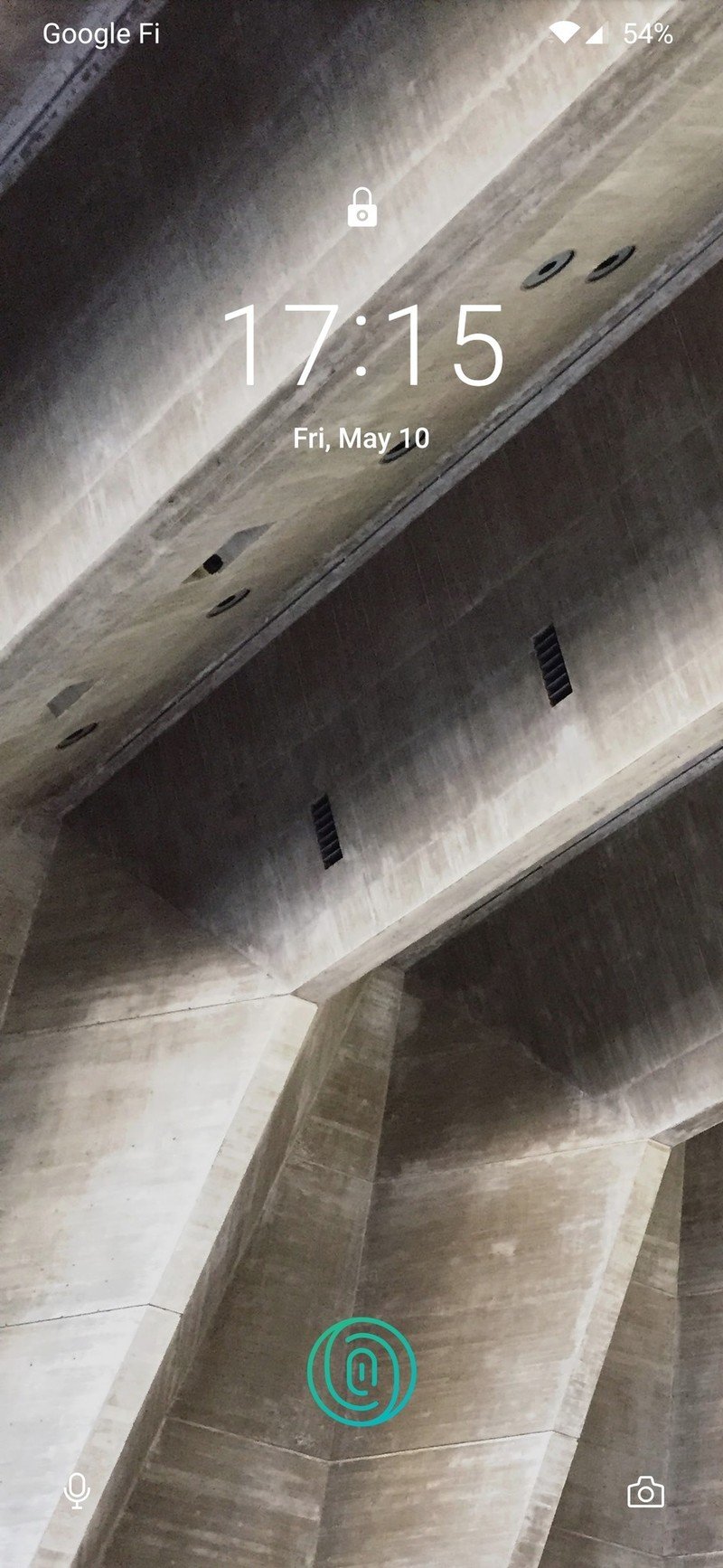
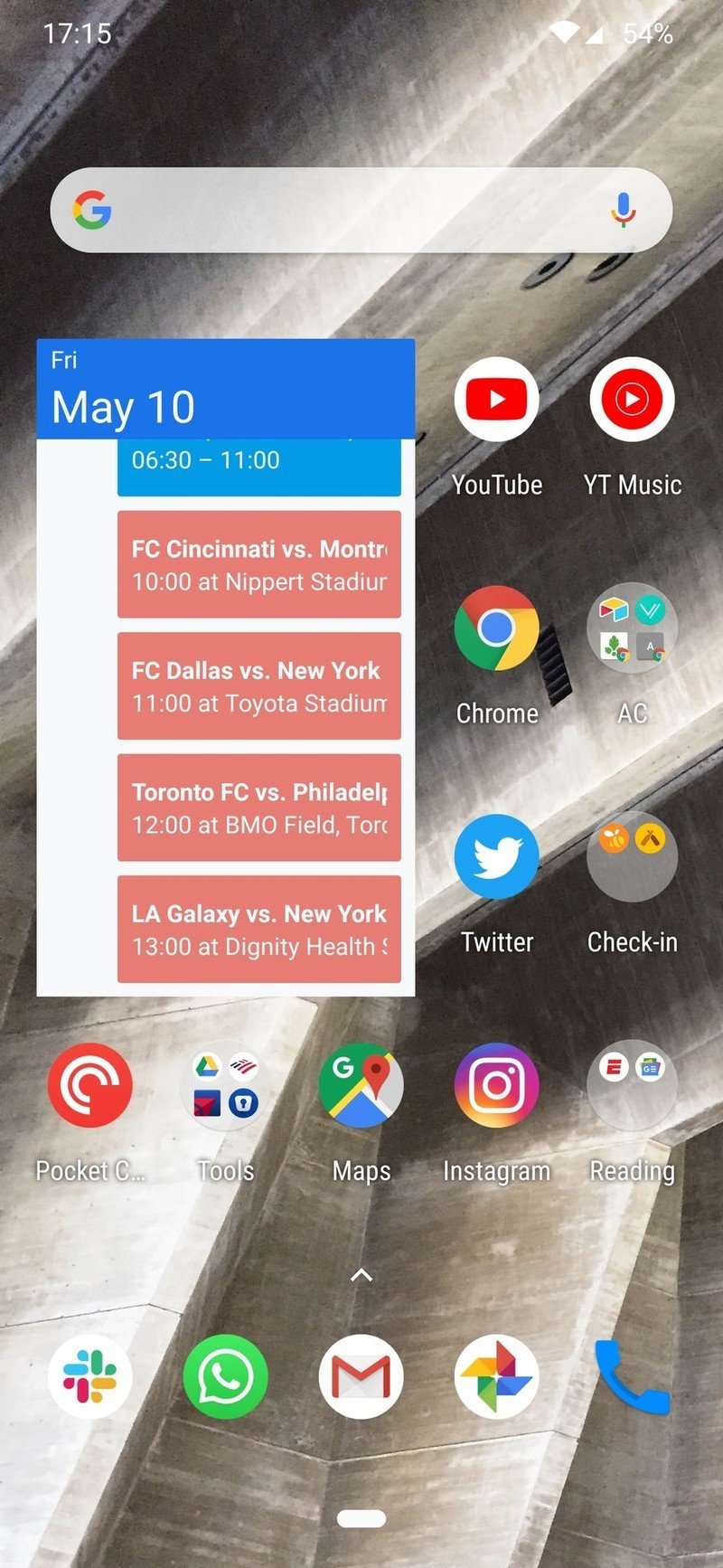
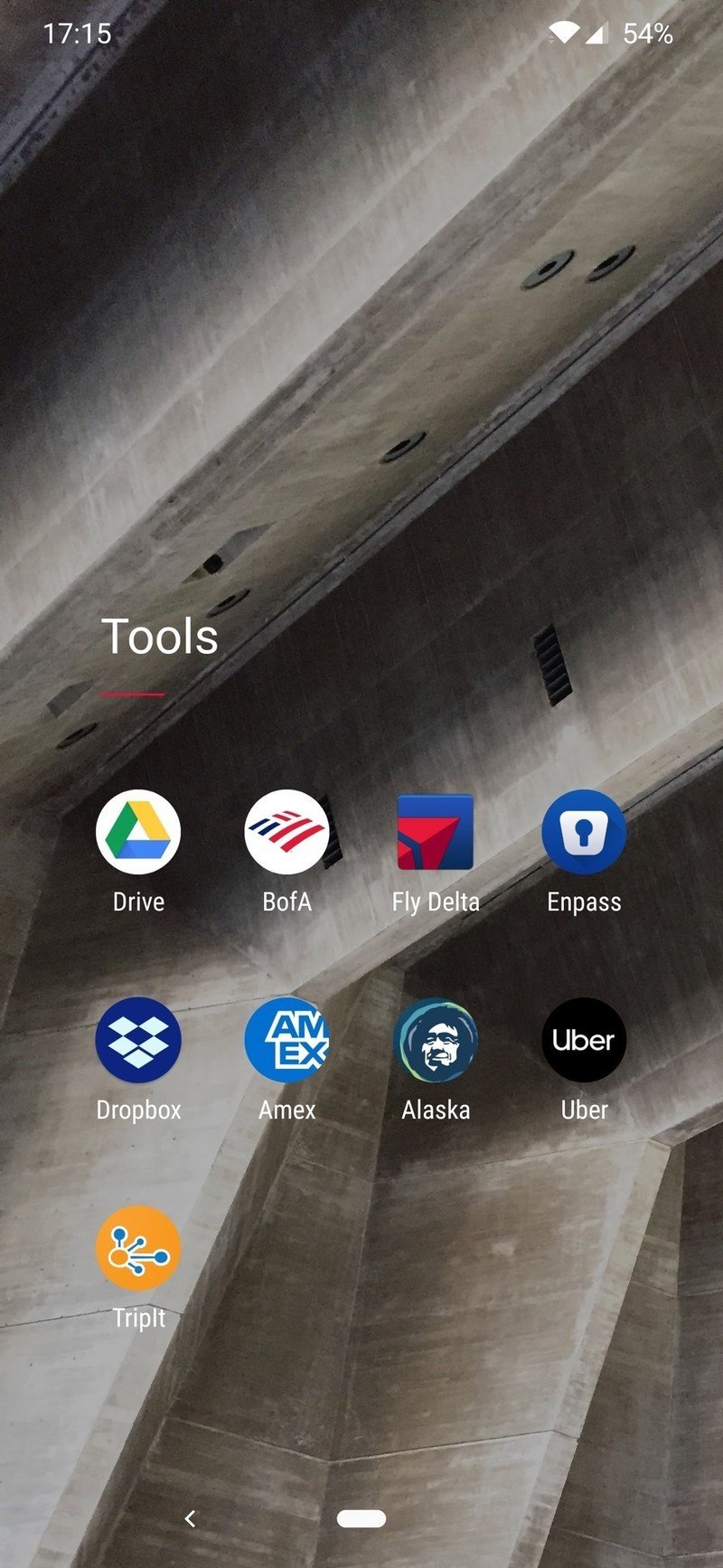
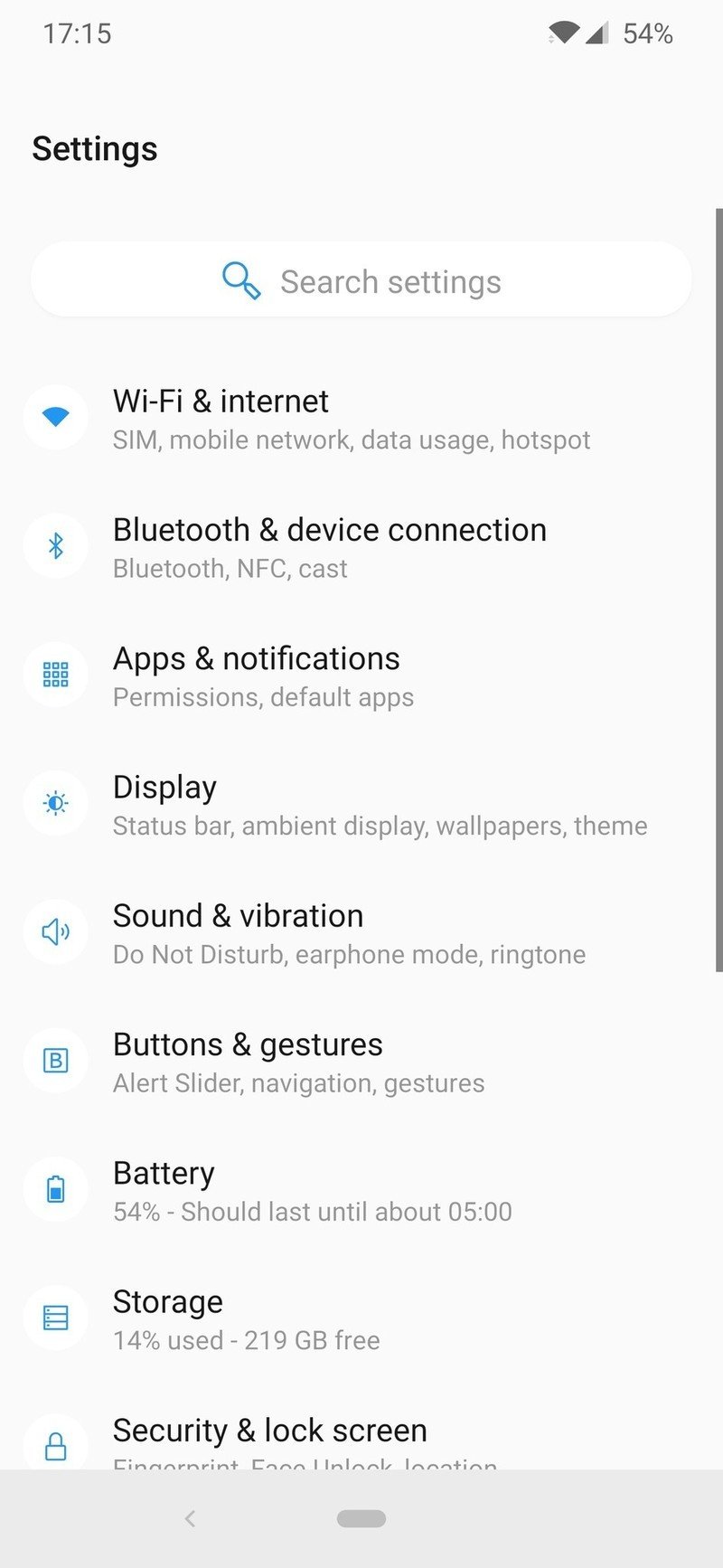
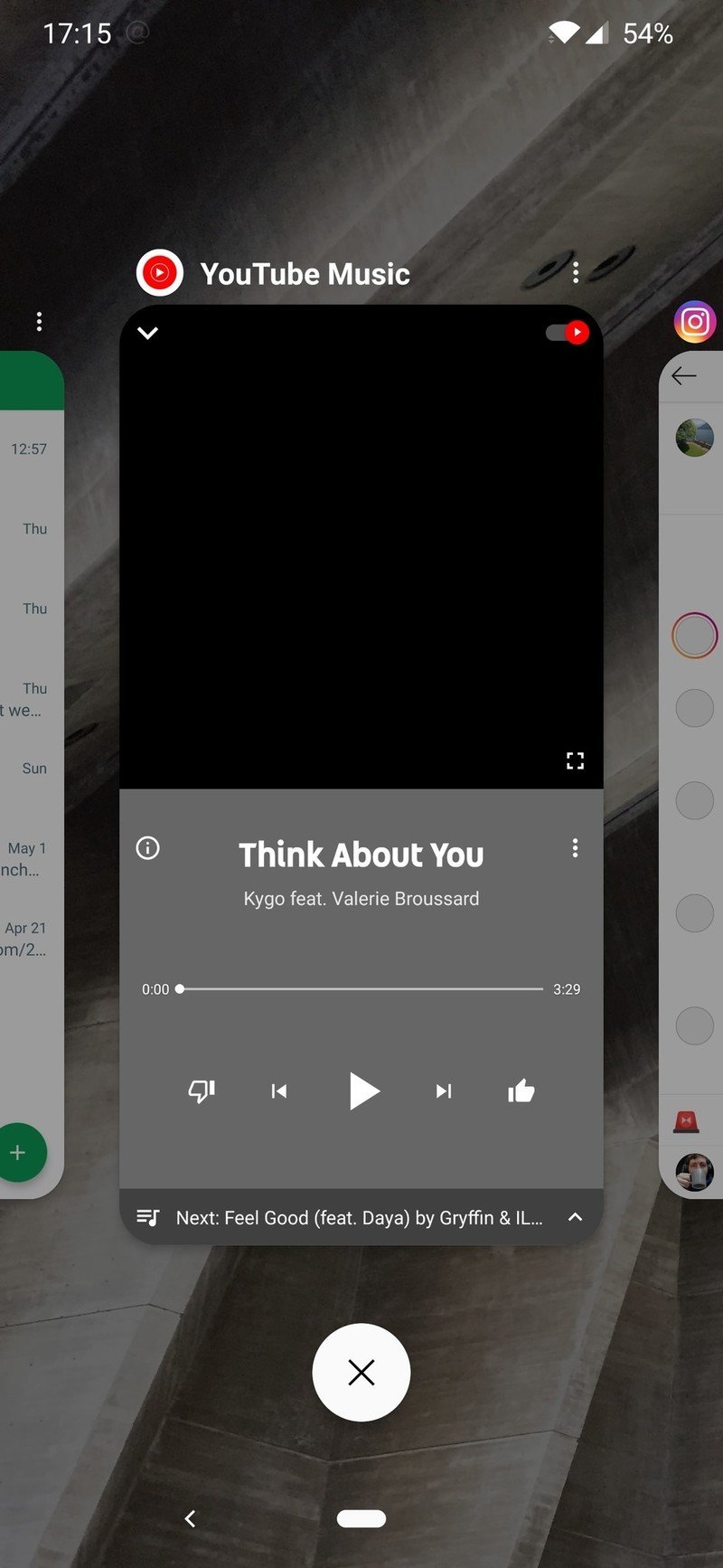
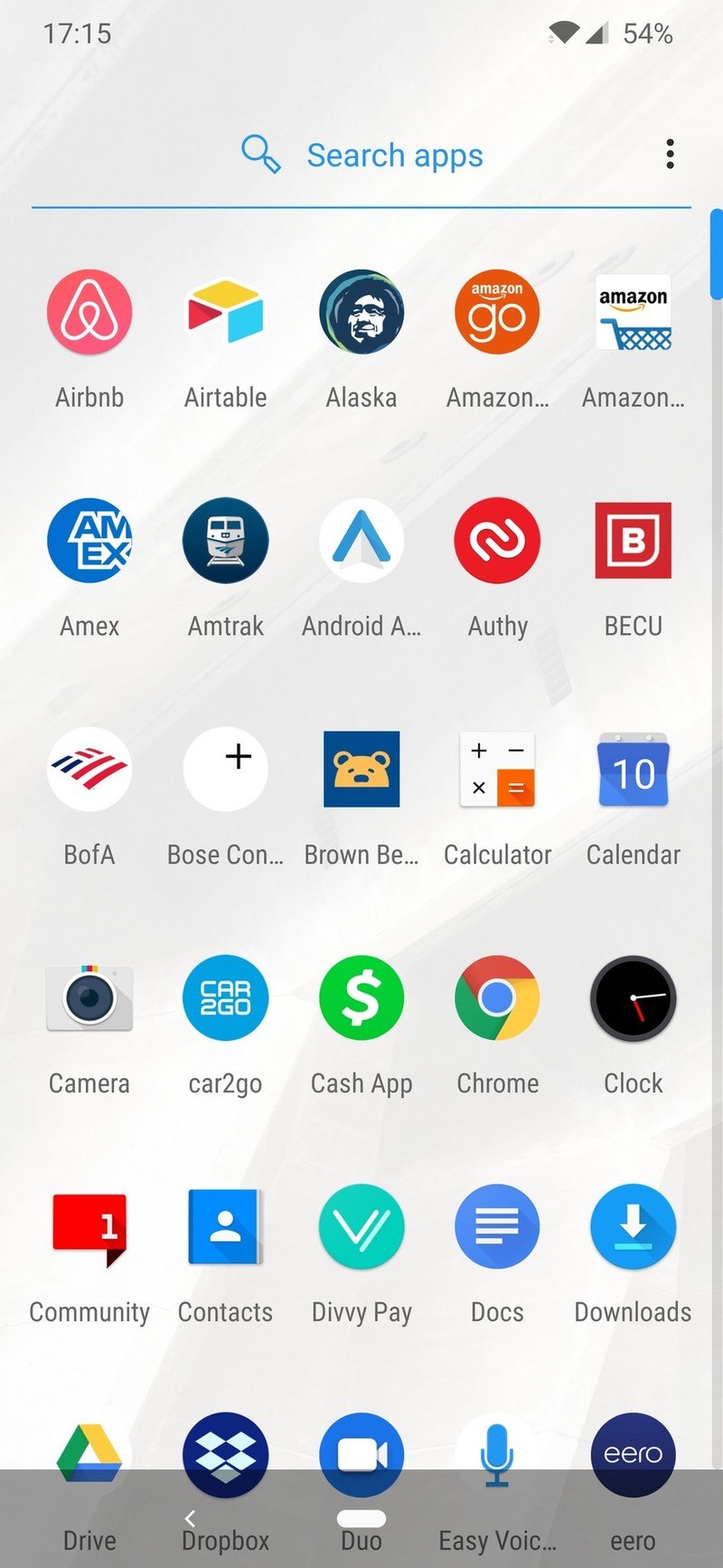
The only notable addition in this version of OxygenOS is "Zen Mode," which is separate from the general Digital Wellbeing features in Pie. This is an interesting, and somewhat divisive, feature: tap it in the quick settings, confirm, and your phone goes into a completely locked-down mode for 20 minutes. All you can do is make and receive phone calls, and take photos. That's it. The 20-minute timer can't be changed, and there is nothing you can do to stop it; not even a reboot. The thought is that people are so addicted to their phones that they need to force themselves to stop using it — if that sounds like you, this may be helpful, but I don't have that particular problem. This is a particularly novel approach to the idea, and maybe it'll help some people.
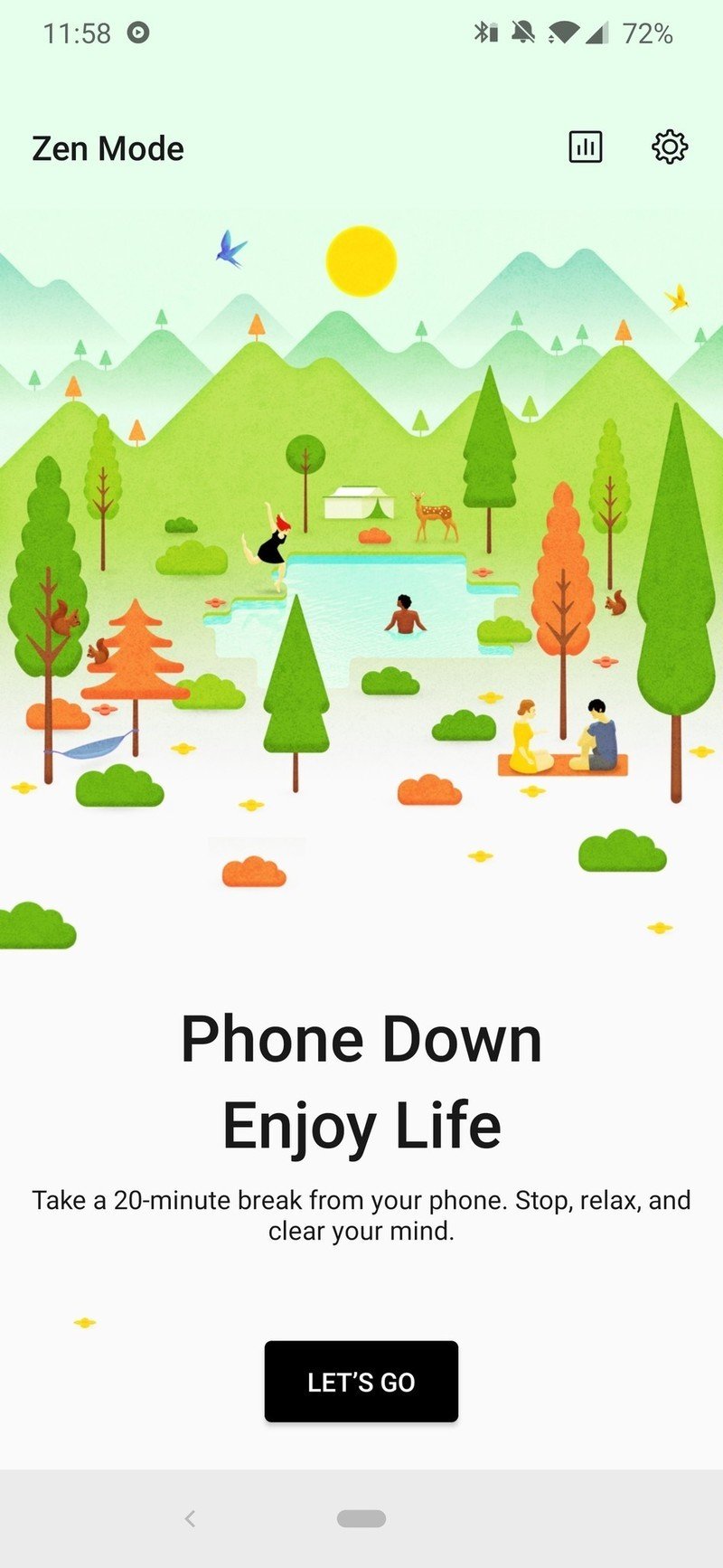
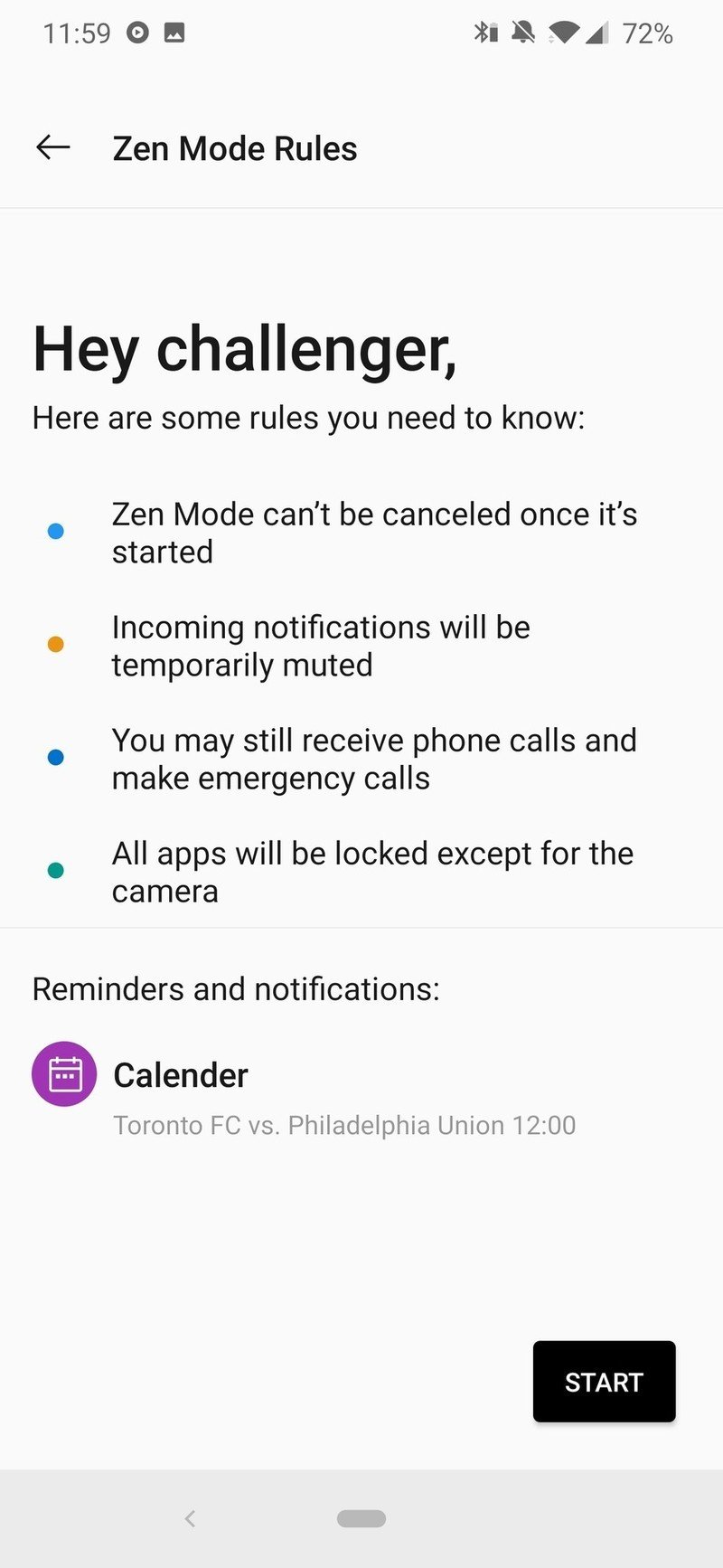
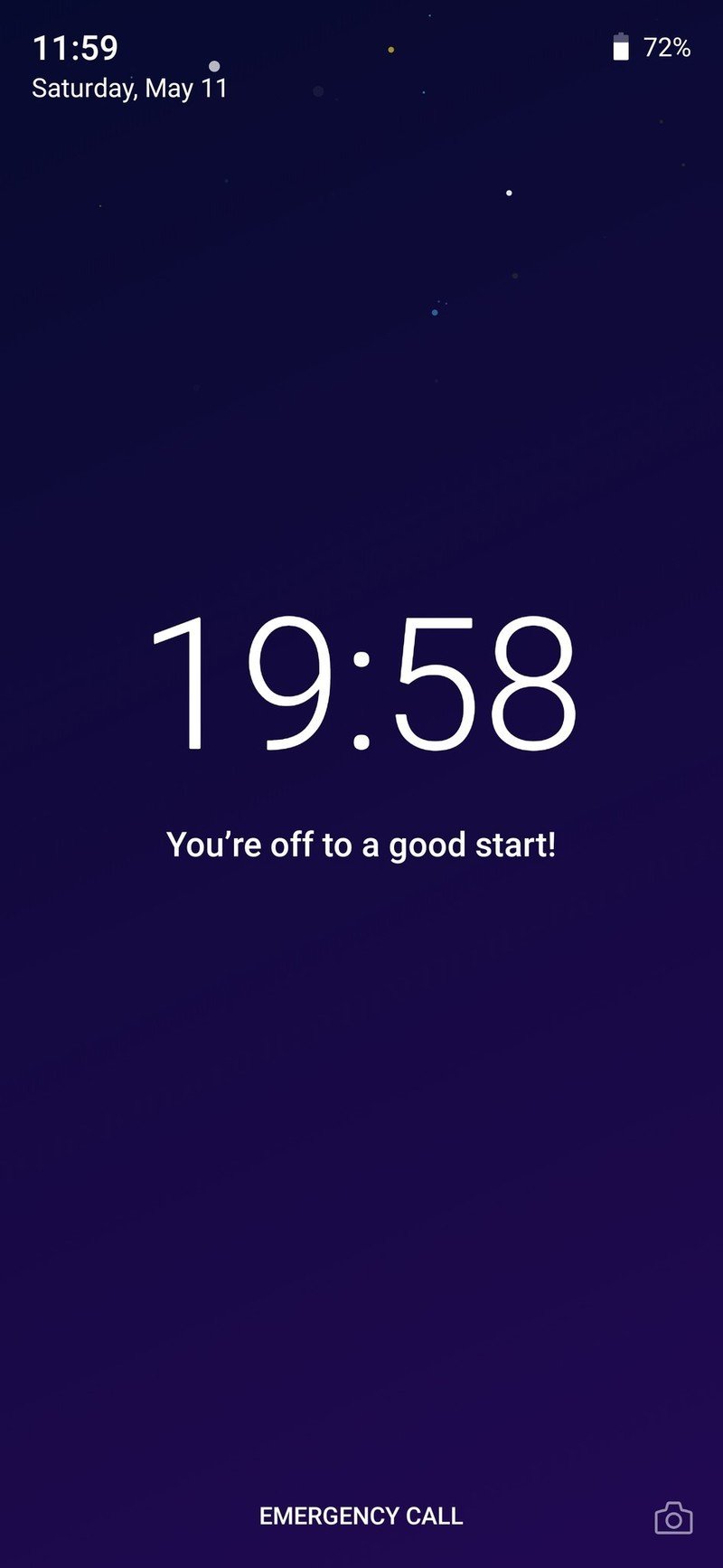
There isn't a single task, or pile of tasks, you can throw at this phone to make it slow down or even skip a single beat.
The experience of using the OnePlus 7 Pro every day, just like every OnePlus phone, is defined by its speed. There isn't a single task, or pile of tasks, you can throw at this phone to make it slow down or even skip a single beat. It's lightning quick in every single interaction, app opening, heavy-duty game, and intensive multitasking. There's no shortcoming, caveat or exception here: the OnePlus 7 Pro just does whatever you ask, and does it quickly.
That experience is only enhanced by the display's 90Hz refresh rate, which is new for OnePlus and very rare anywhere — it's the only time I've experienced a mobile display over 60Hz since using the original Razer Phone. And oh my, what a difference it makes. When paired with the already smooth and incredibly quick interface, the 90Hz display just makes everything feel perfect as you scroll and move through apps. It feels even more so like you're manipulating the content on the screen directly than any other phone. This is something you won't have any reference for or understand until you use the phone, but after using it you'll feel like a 60Hz display is has motion that's oddly jittery and blurry by comparison.
Reviewers were provided with the highest-end version of the OnePlus 7 Pro, which features 12GB of RAM and 256GB of storage — both double the base amounts, which is an extra $120 at retail. But I don't have a single doubt that this software runs just as well on the base model with 6GB of RAM, considering how fast and smooth a near-identical build runs on the OnePlus 6 series. Still, I would spring the extra $30 to get 8GB of RAM and 256GB of storage for the sake of futureproofing — and to have the option to pick Nebula Blue rather than Mirror Gray.
Battery life is good, but not consistently great. It's possible to kill this thing before the end of the day.
OnePlus is just as well known for long battery life as it is fast software, and that virtue mostly holds up with the 7 Pro. The 4000mAh battery is a nice little bump from the 6T's 3700, but just a hair under the Galaxy S10+ at 4100 and Huawei P30 Pro at 4200. And for the first time on a OnePlus phone, I've actually had to think about battery life. On a typical casual day with lots of time on Wi-Fi and perhaps 3 hours of screen-on time, battery life was no issue whatsoever. I'd end this kind of day with 30-40% battery, all while having zero worries about whether I'd make it through no matter what I did. But on heavier days, with audio streaming, 4+ hours screen-on, ample camera use and time navigating in Google Maps, things got a little tougher. It wasn't uncommon to hit 15% and trigger battery saver near the end of the day after 15-16 hours of use, and I had a couple travel days during my review period where I needed a charge in the afternoon.
The 7 Pro still has the great characteristic that the battery drains consistently with use, and idle battery consumption is very low, but when actively using the phone with the screen on it's clearly draining faster than the OnePlus 6T. It doesn't seem to be the case that the 90Hz refresh rate alone is causing the extra battery drain, but I would assume that all of the display characteristics put together are a big factor. A physically larger display, QHD resolution, dramatically higher brightness, and the 90Hz refresh all use more power than previous OnePlus phones. With this small drop-off in battery life, the OnePlus 7 Pro is just average for the segment, rather than outstanding — not a bad thing, or any sort of shortcoming that would lead you to not buy the phone, but battery life is no longer stellar like it once was.
Warp Charge 30 is amazing — you just have to be willing to buy a couple chargers to use it every time.
If you're willing to keep your Warp Charge charger around, and invest in a couple extra for the home and for the car, it will completely eliminate any worries you have over battery life. The new faster charger that debuted with the OnePlus 6T McLaren Edition now comes in the box with the 7 Pro, and provides insane charging speeds: 30W flowing consistently to your phone can add a third to your battery in just a handful of minutes. Unfortunately this still means you don't get Qualcomm Quick charge or USB-C Power Delivery support, so any time you plug into a non-OnePlus charger it's going to feel like a burden to wait for a top-up. That's really only an issue with portable batteries because OnePlus doesn't make one with Warp Charge, but it's still frustrating that the company doesn't just support the widely-adopted charging standards in addition to its own proprietary offering (that's admittedly better).
Some other odds and ends worth mentioning
- Call quality was solid as expected on Google Fi.
- The stereo speakers are loud, but I'm not blown away by the quality for music.
- Video recording was not noticeably improved over the 6T; the stabilization is quite good, but overall quality seemed the same.
- You can't record video with the wide-angle camera, which seems like an odd omission.
- Portrait mode is still quite bad with edge detection and selective blurring — I much preferred to just shoot with the main camera at f/1.6 and get natural bokeh.
- I still love the Alert Slider, and wish every phone had a physical mute switch.
- OnePlus includes a nice clear TPU case in the box that'll tide you over until you find one you really want.
- OnePlus still makes some of the best USB-A to USB-C cables. I love them.
Holding back
OnePlus 7 Pro Cameras
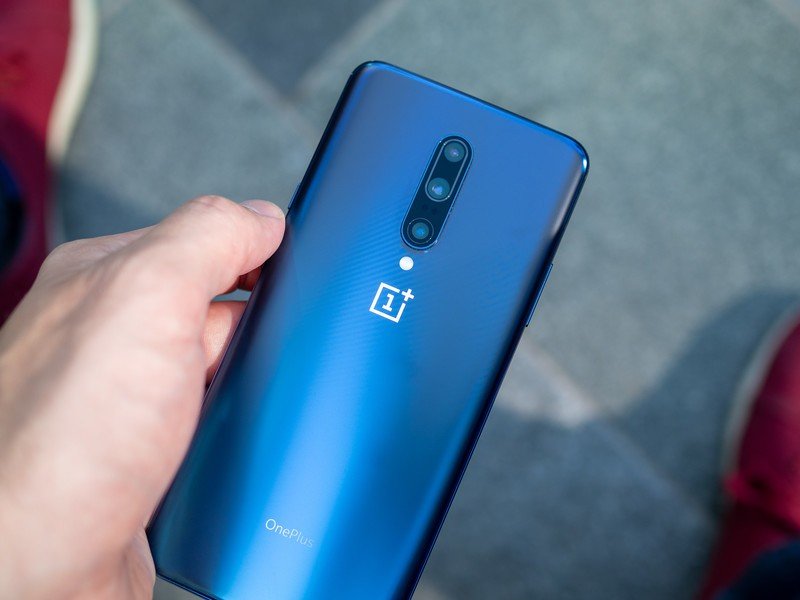
One of the biggest things you expect from a smartphone at this price is a great camera experience. And that's never been truer than now with the Pixel 3a XL at $480 offering one of the best smartphone cameras at any price. The 7 Pro uses a triple camera setup — a first for the company — anchored by a main 48MP sensor we've seen used in several phones this year, flanked by an 8MP 3X telephoto camera and 16MP ultra-wide camera.
The main camera is a good progression from the 6T, but still lacks that great computational photography prowess.
The main camera is the big focus, shooting with 4-to-1 pixel binning to generate 12MP photos with an effective pixel size of 1.6-microns. Paired with an f/1.6 aperture and OIS, it has all of the right specs. The resulting photos are very good, and easily the best of any OnePlus phone to date. The fundamentals are solid: photos are crisp, well white balanced, and preserve textures. The software then applies basic bumps to the saturation and colors, and does so in a way that walks a nice line between full-on accuracy (like Google often does) and overblown HDR effects (like Samsung often does).
But despite the newer sensor that's providing more light and better sharpness, the typical OnePlus camera problem remains here in that the photos are still a little dull, and often missing that "wow" factor that makes you immediately excited to share them right after capturing. For the most part, it feels like it comes down to a narrower dynamic range and a reserved color profile compared to the competition. Colors don't pop enough and blacks get crushed consistently in a way that detracts from the photo. So although the photos have great fundamentals, there's a lot of photographic nuance that's being missed in processing the shots.
The best example of this was a weekend trip where I had a shared Google Photos album with friends that had a Pixel 3 and a Galaxy S10+ (seems too perfect, but trust me it's true) — as I scrolled through, the photos that caught my eye the most were from their cameras, not my own. Putting them side by side, I was regularly impressed by how much better each was. It's not that the OnePlus 7 Pro's photos were bad by any means, but they just don't grab you every time — and you notice that most when they're sitting next to photos from better cameras.
Low-light performance is good enough, but won't challenge Google or Huawei.
Low-light performance is good enough, competitive with Samsung while sitting a full notch below the Google Pixel 3 and Huawei P30 Pro — unsurprising considering the history those companies have in making the best low-light cameras available. Very dark scenes are a struggle for the main camera, with the results usually ending up over-processed and soft with an odd amount of purple chroma noise from the aggressive smoothing. Mixed lighting scenes where things are dim, but not dark, don't pose many problems — just make sure you have a steady hand, and let it do its thing, and you'll be happy with the results. The "Nightscape" dedicated low-light mode can ostensibly help with the darkest scenes using advanced multi-frame processing, but it's specifically designed for cityscape photos and not necessarily just any dark scene like Google's Night Sight is.
On the telephoto front, I'm happy that OnePlus chose to go with a 3X zoom rather than a standard 2X like so many others have historically. 3X gives you a considerable amount of zoom, and with a 48MP main camera that can easily handle digital zoom up to that point you're not missing out on anything in between. The telephoto camera doesn't have a great sensor, though, and with small pixels and an f/2.4 aperture it just doesn't provide the same amount of light or crispness of the main camera. It's useful for zooming to get shots you wouldn't otherwise get, but not quite god enough to be something you'll choose to shoot with all of the time.


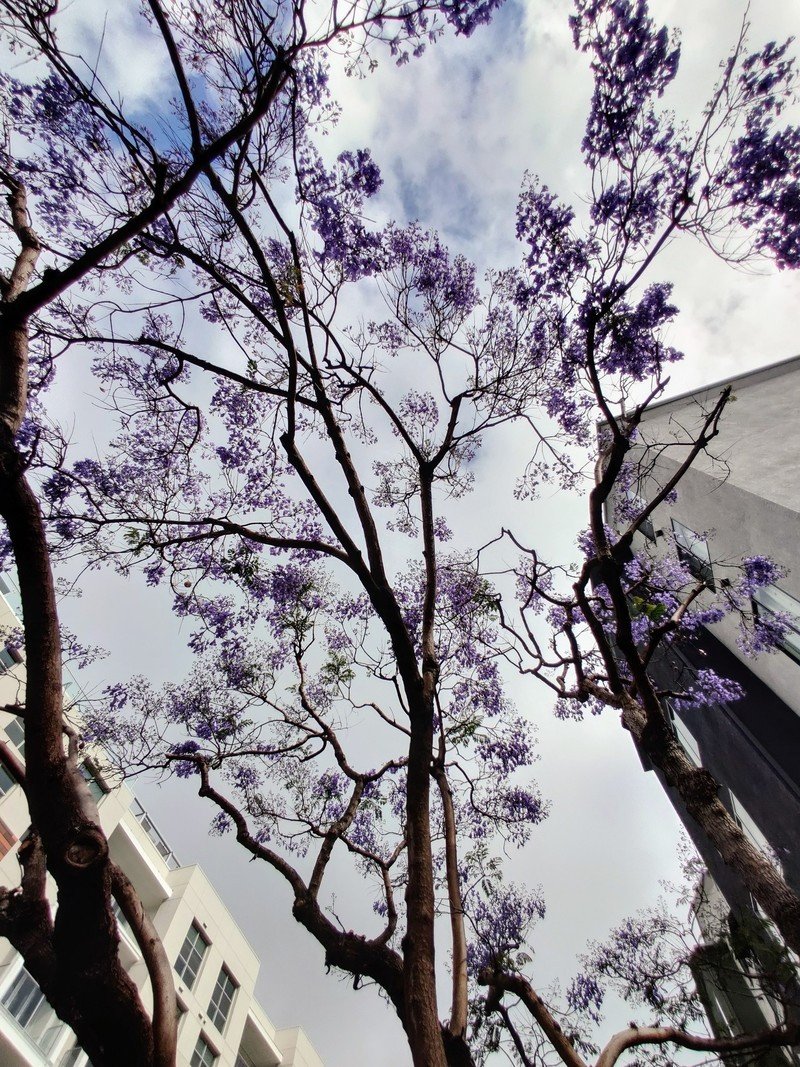
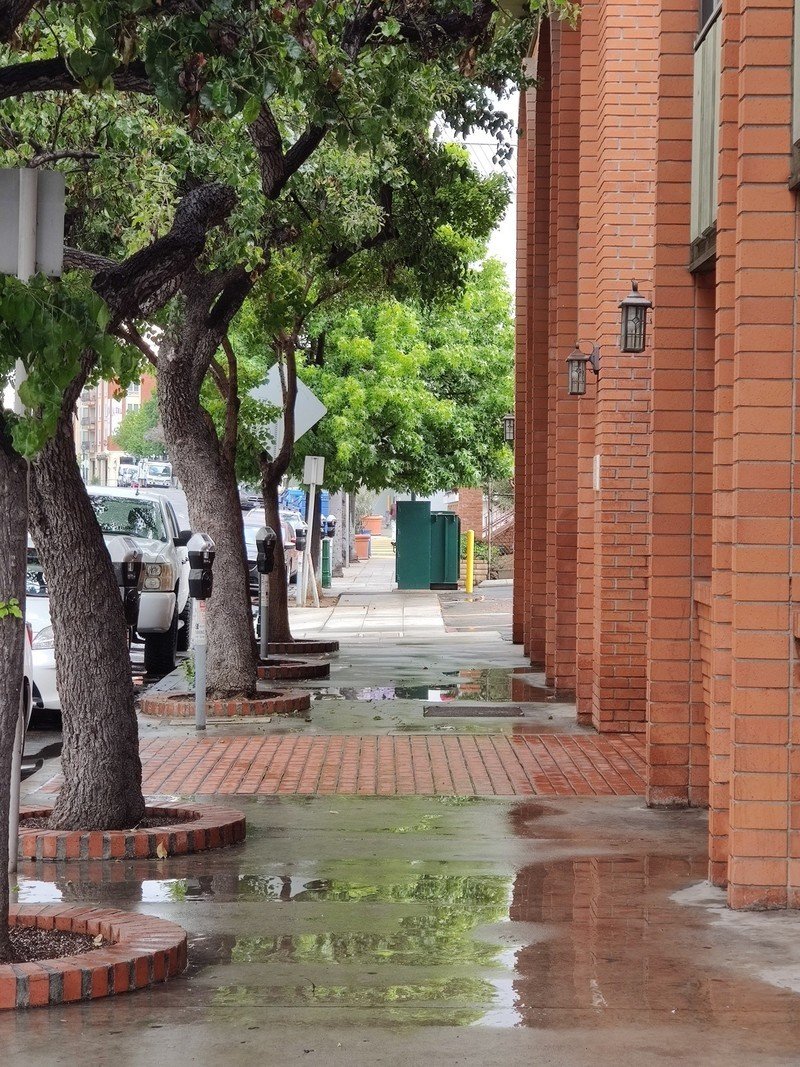

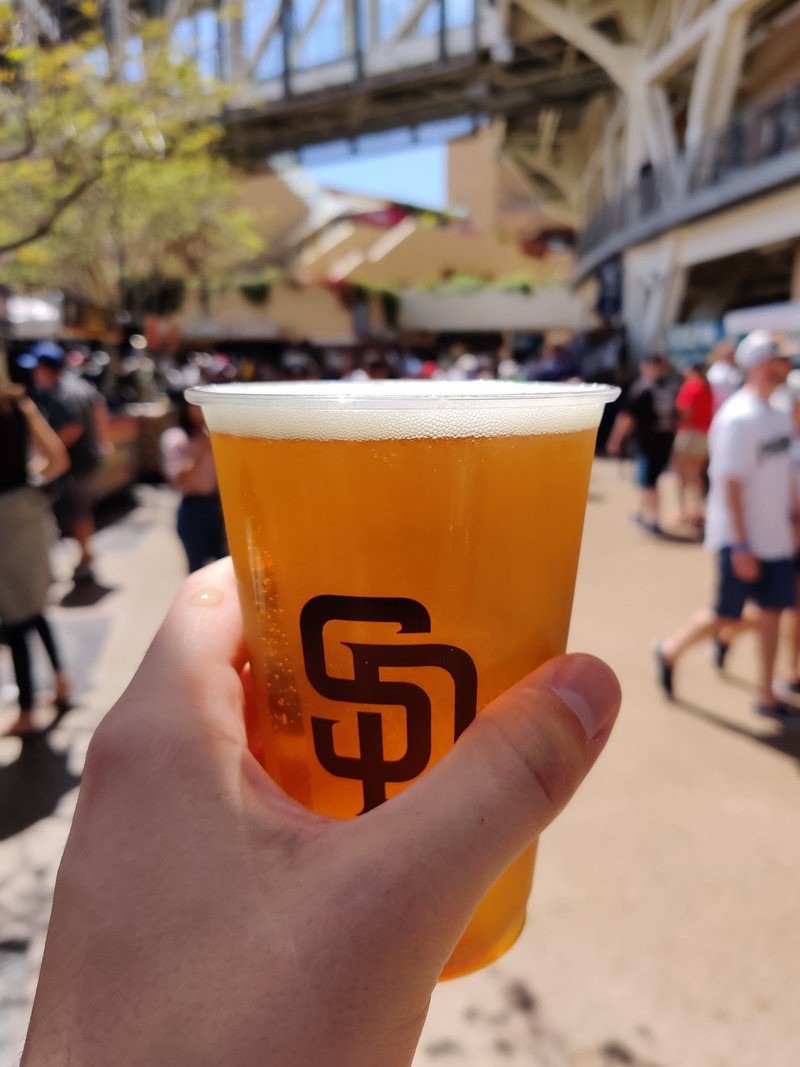
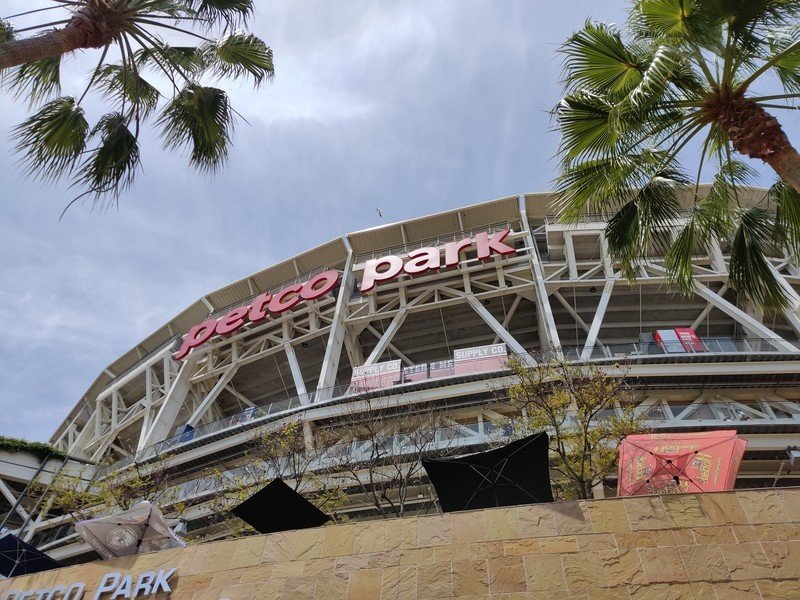


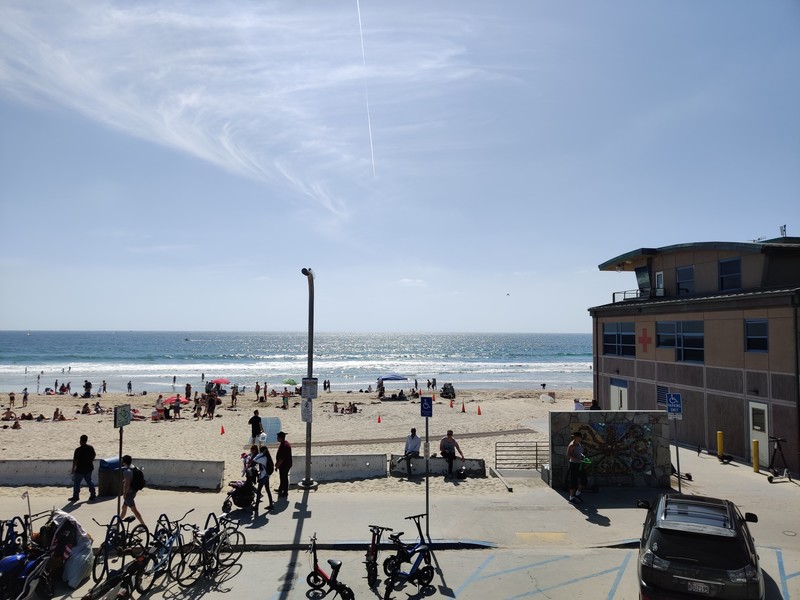









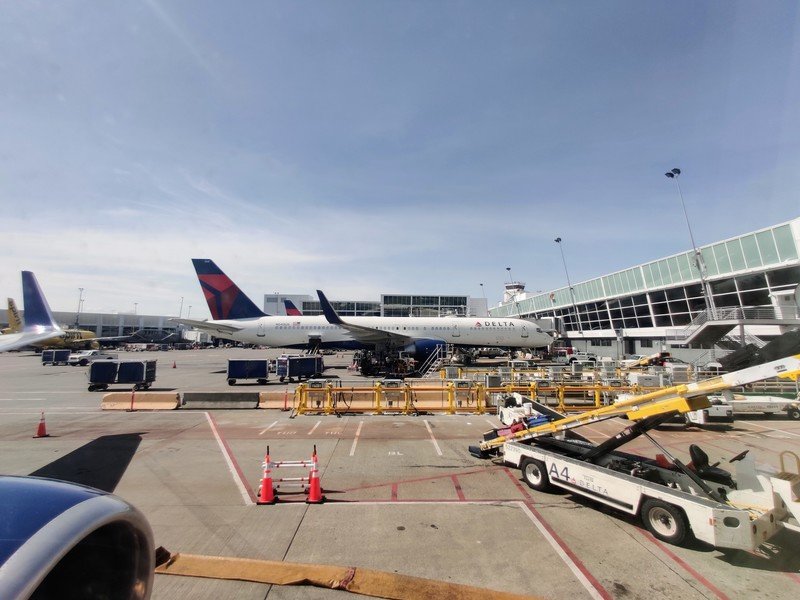
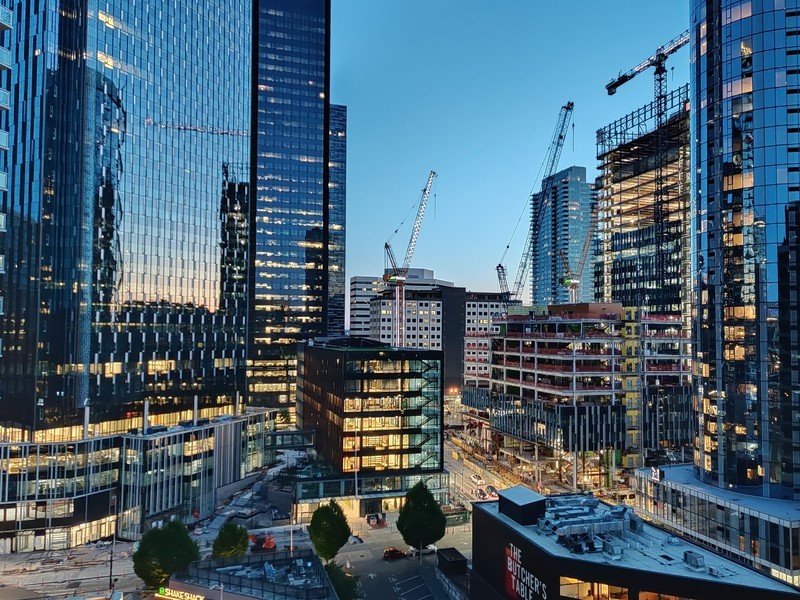
I'm rather disappointed in the wide-angle camera, which is considerably behind the Galaxy S10 series in all respects, and easily a step below the LG G8, which I was already critical of for not keeping up with the times. It surprisingly has auto focus, which I think is the root cause of its main issue: photos come out looking incredibly soft and almost blurry on a regular basis, even in perfect lighting with no motion.
Whereas most wide-angle shooters stick to a fixed focus with a short minimum focal distance to make sure everything captured in the super-wide frame is sharp, using auto focus means the camera can often focus way in the distance while still having that wide-angle view that shows you all of the things on the sides that would normally be out of the frame. The result is photos that are typically sharp in the middle, but horrendously soft on the edges — and in some cases, the camera just misses focus altogether and gives you an entirely soft image that's unusable. Take a look at a quick gallery of shots that show the issue below.
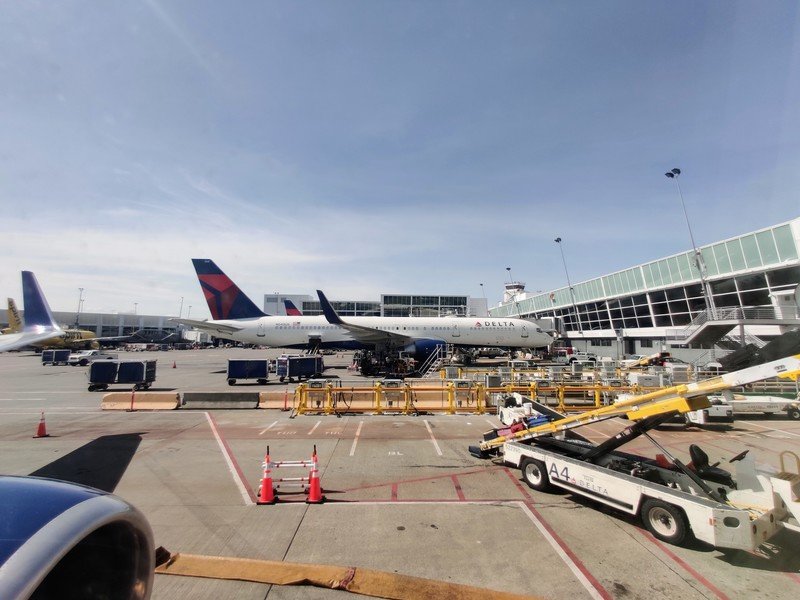
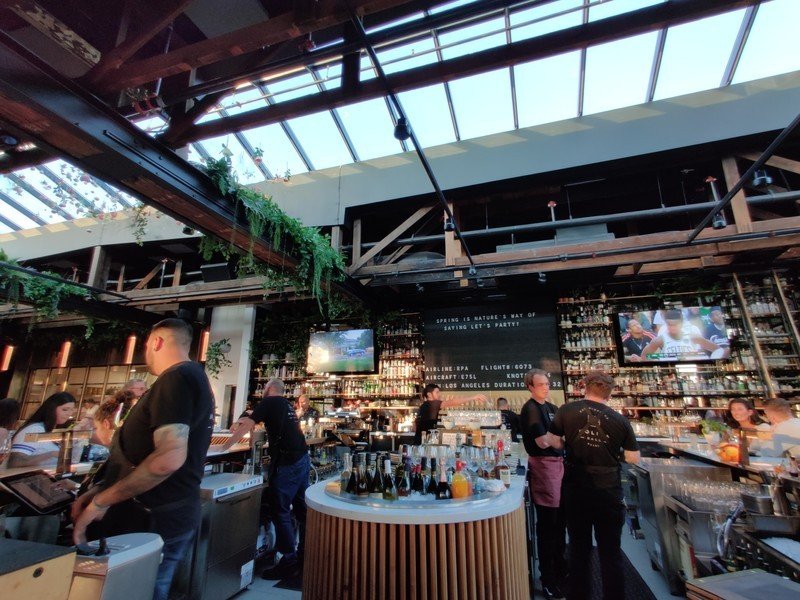


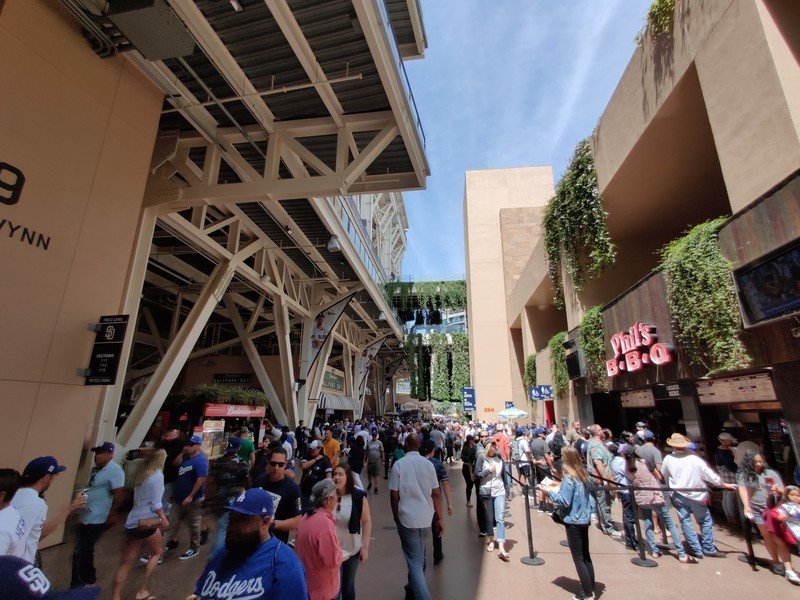
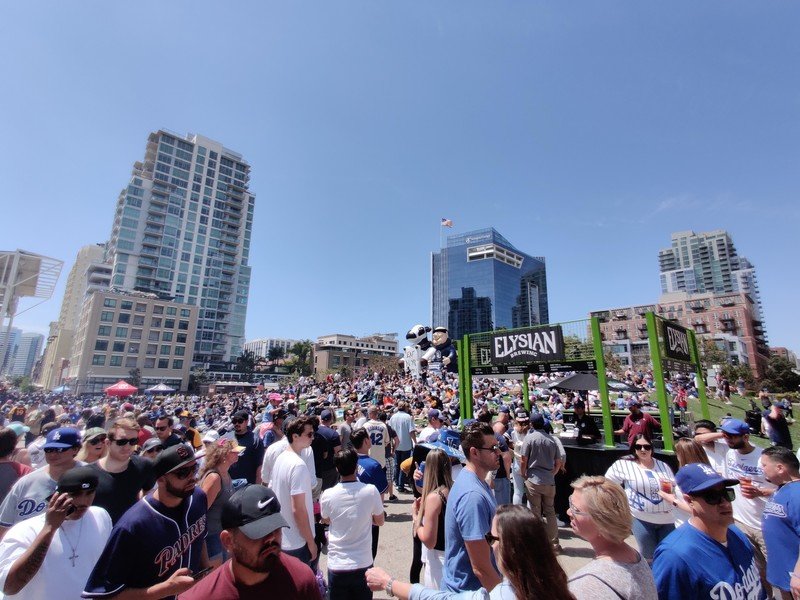



Considering the shortcomings of both the wide-angle and telephoto cameras, it's tough to call this a three-camera setup.
That's not good, and it makes using the wide-angle camera very frustrating. This isn't something you can't always notice when you take the photo, but you notice later and can never unsee once you're aware of what's going on. Considering the shortcomings of both the wide-angle and telephoto cameras, it's tough to really call this a three-camera setup, which is really unfortunate for the first attempt from the company. Thankfully the main camera is very capable in its own right, but it's a shame that the tertiary cameras aren't more complementary.
Yes, the selfie camera is contained in a little pop-up mechanism on top of the phone. The pop-up works fine, and it's unobtrusive; sure it looks a little silly, but it comes and goes quickly and gets the job done while eliminating the notch. No complaints here.
I _ could_ have talked about this up in the display section because it's what enables the 7 Pro to have tiny bezels and no notch or cutout, but what's actually important is the camera quality. I'm happy with the quality of the selfies overall, and never got a bad photo. But the lack of auto focus is a little frustrating, especially with multiple people where you're shifting the camera around a lot; and you always have to be conscious of extending your arm a bit extra just to make sure your face is going to be crisp. Again, just one of those little things you start to expect when the price gets this high.
Amazing choice
OnePlus 7 Pro Review
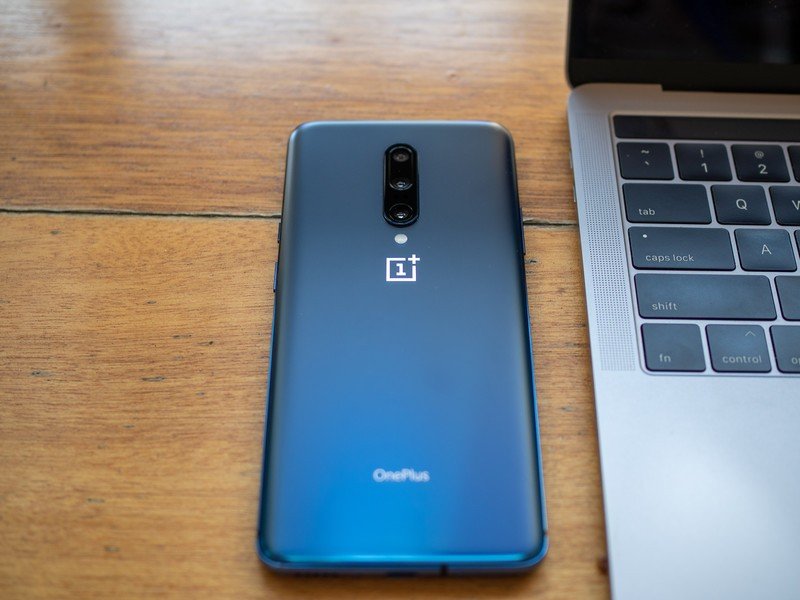
OnePlus has continued its streak of consistently improving its phones with each successive generation. And the OnePlus 7 Pro is a particularly big jump. The hardware quality and design is on an entirely new level, and the display is finally up to speed with top-end competition. Little touches like the new haptics, stereo speakers and greatly improved in-display fingerprint sensor also set it apart from less-expensive phones. And OnePlus can still lean on its fantastic software experience that's one of the best available — it's fast, clean, consistent and filled with little touches and customization options that anyone can enjoy.
Some will buy the OnePlus 7 Pro based on value, but it's a worthy buy because it's a great phone at any price.
Unfortunately for us, despite the higher starting price we still face some typical OnePlus caveats with the 7 Pro. It still doesn't have a water resistance rating or wireless charging, and the camera experience is clearly still a step away from challenging the big players — the wide-angle camera is a particular disappointment, and even the much-improved main camera just isn't up to speed with the latest flagships. Battery life has also frustratingly not progressed, despite a larger battery, which is tough to see on a OnePlus phone in general but also for one this large and heavy.
Those are ultimately small caveats, though. And things that I would only be nitpicking on a phone that is otherwise truly great, and honestly only for phones that typically cost upwards of $1000 — the ones that OnePlus claims to be competing against. And even with some of these small shortcomings, the OnePlus 7 Pro does compete against these phones that cost $200-300 more.
4 out of 5
For the first time, I see two clear scenarios where someone would choose to buy a OnePlus phone. The first is the same as it's always been: you buy the OnePlus 7 Pro because of its value in offering specs, capabilities, performance and software that are worth far more than you pay. But now there's a second reason: you may buy the OnePlus 7 Pro because it's a great phone overall, even if you're not on a budget and would otherwise happily spend $1000 on any of its competitors.
The OnePlus 7 Pro isn't just an amazing value, it's an amazing phone.
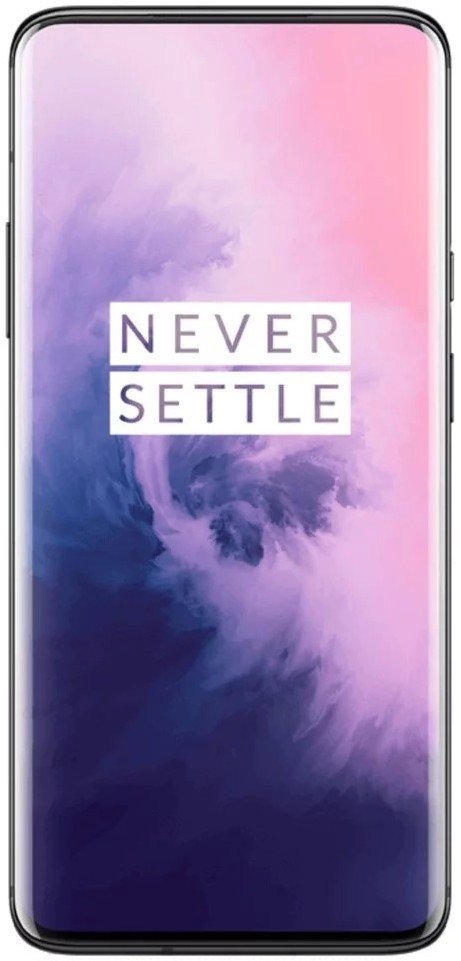
OnePlus 7 Pro
It's tough to believe that you can get all of this for a starting price of $670. OnePlus has upped its hardware game, and filled a ton of little gaps that used to separate it from the top-end competition. Now, it's just a great phone at any price. It isn't free of all compromises, but neither are any of the phones it competes with — it has caveats in the experience, but also notable wins over phones that cost $200-300 more.
Andrew was an Executive Editor, U.S. at Android Central between 2012 and 2020.
